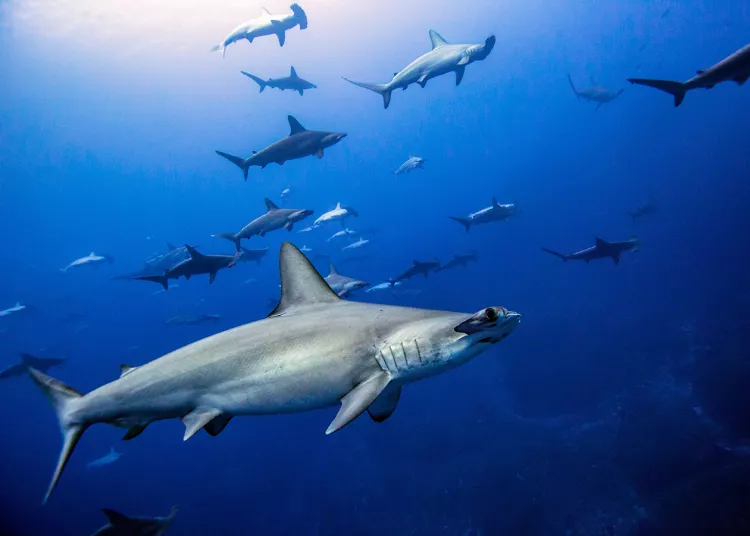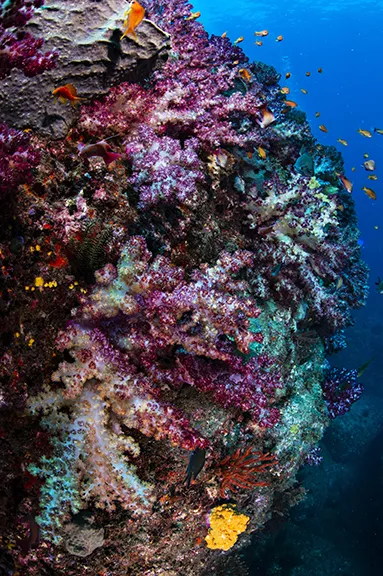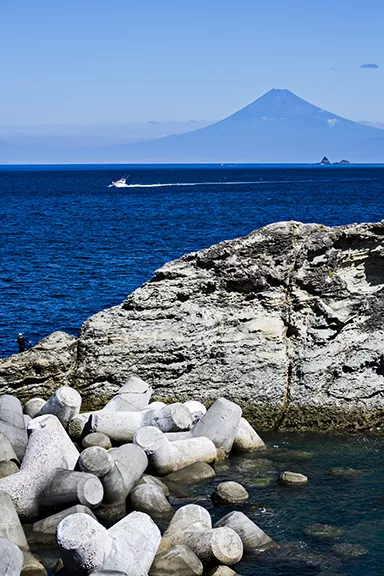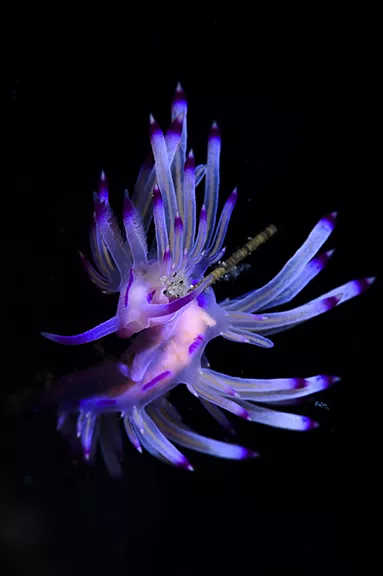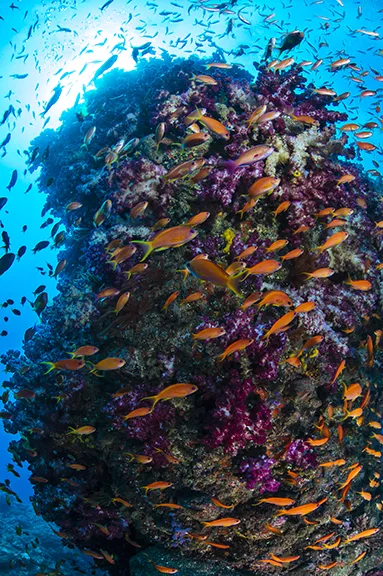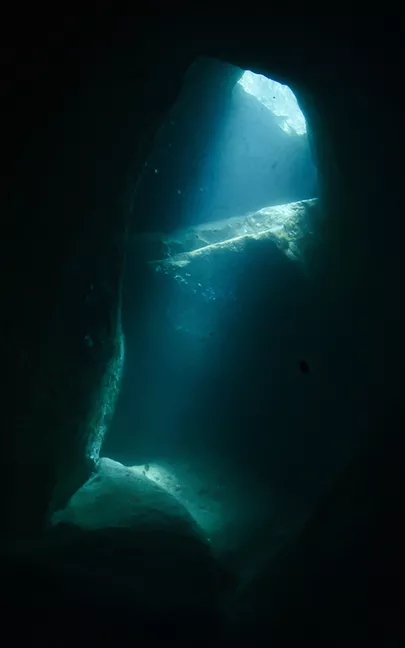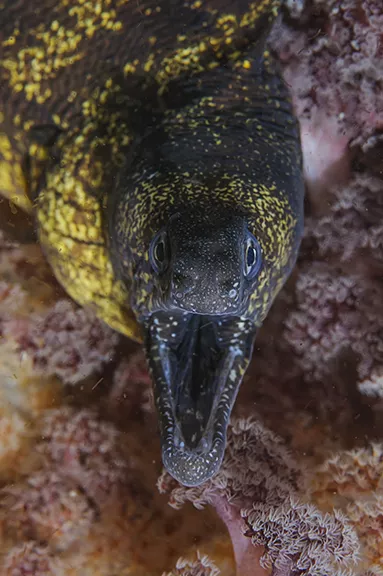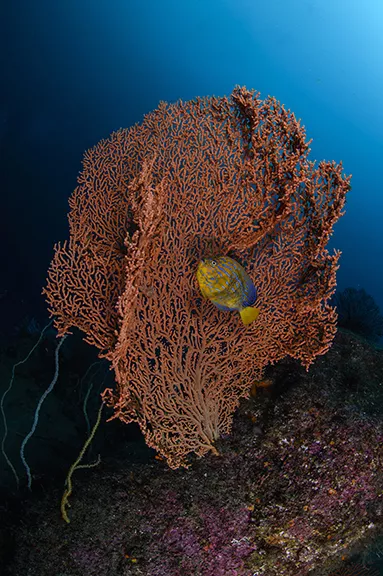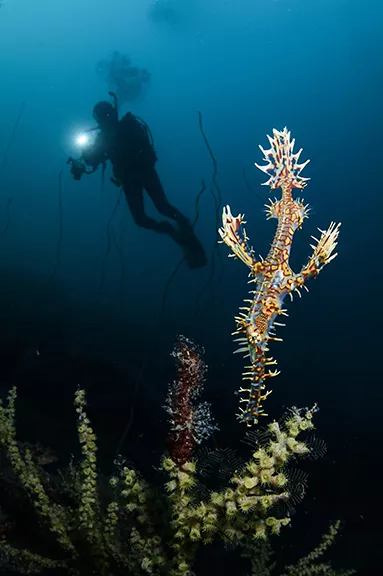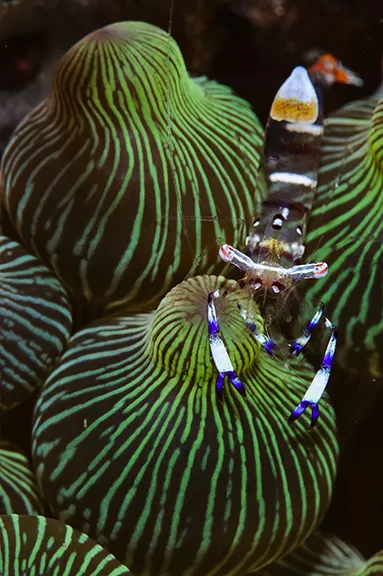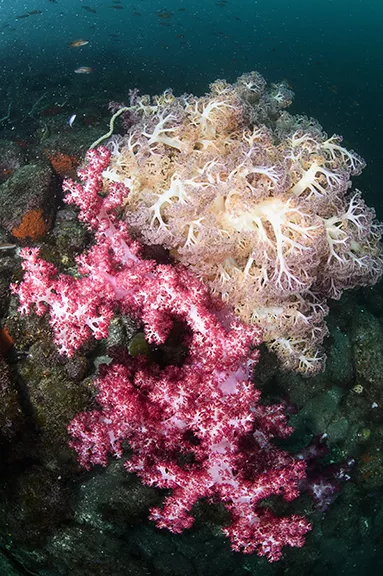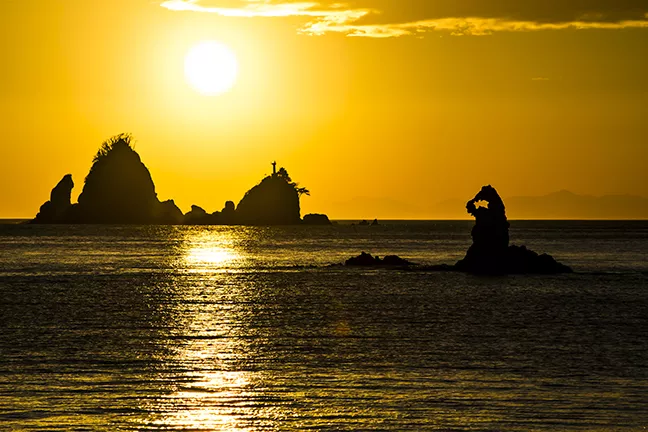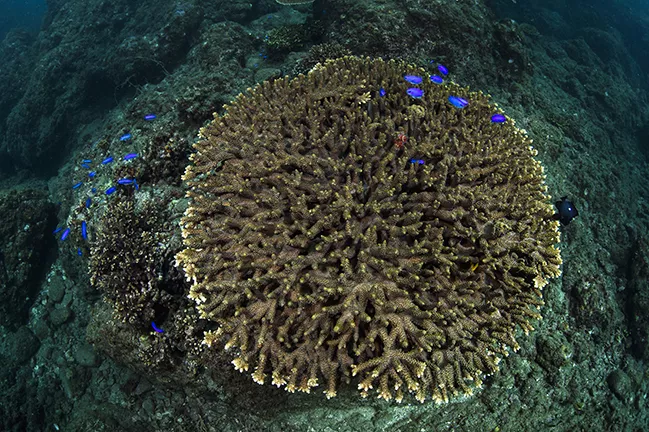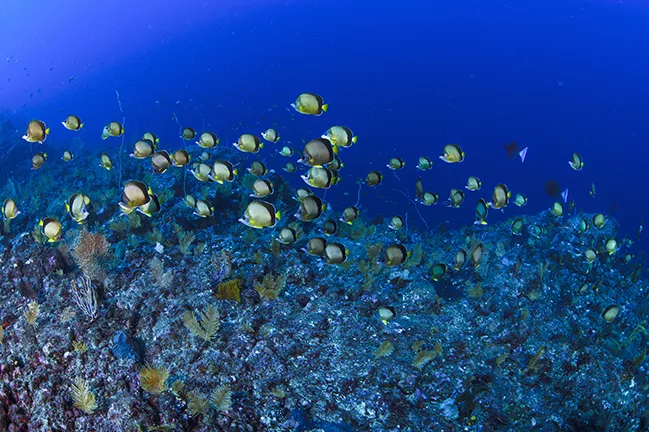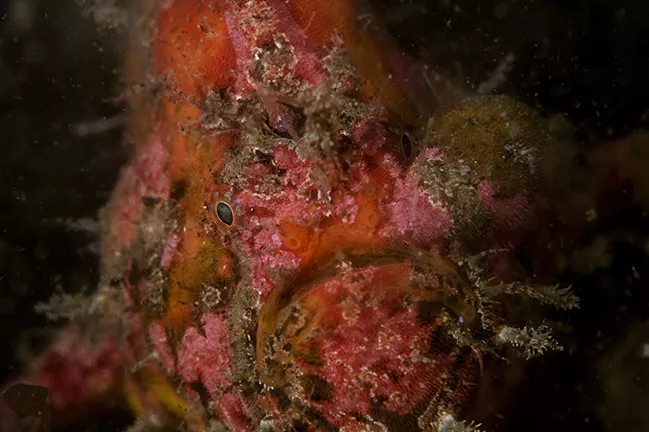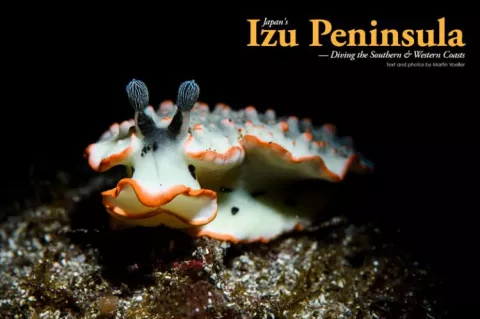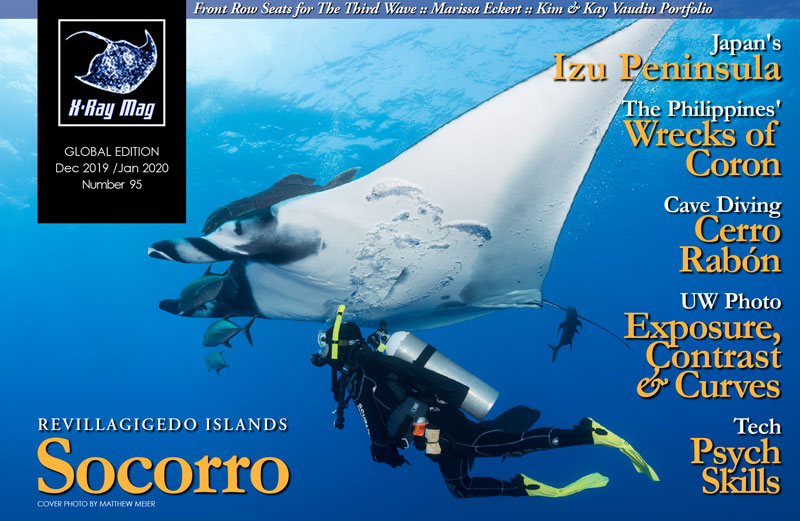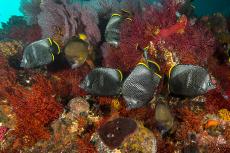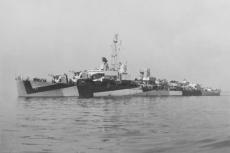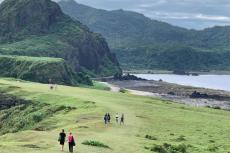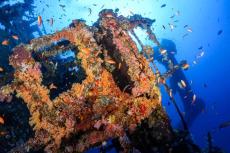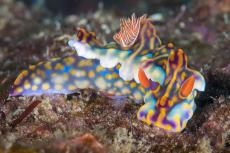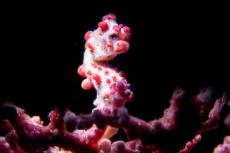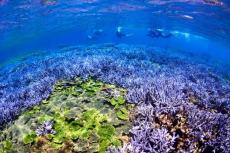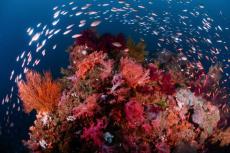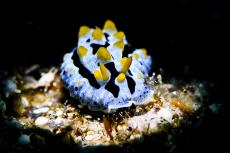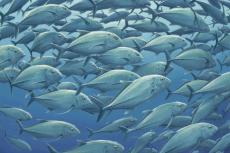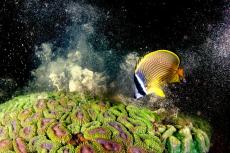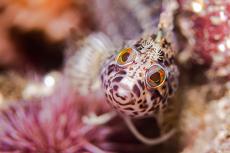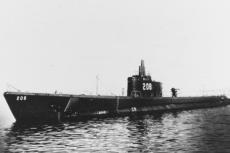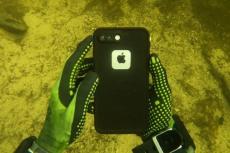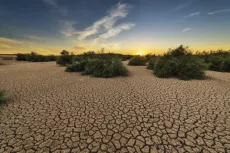In just five years, Japan has seen its number of tourists grow by 20 million, and most of them visit the country to see the ancient temples, to experience the onsen hot springs, or to walk through the labyrinth of neon skyscrapers in its urban cities.
Japan is an island country surrounded by the ocean, and it should be no surprise that the country offers excellent scuba diving opportunities along its vast coastlines—it is an archipelagic country with islands spanning over 3,000km. And not far away from Tokyo lies Izu, which is Tokyo’s backyard of diving, accessible by car in just two to three hours from the city.
Contributed by
Factfile
“Dive in Japan” is a non-profit organization operated by NPO Japan Diving Experience, which assists inbound travelers who wish to dive in Japan. You can choose from a menu of over 170 dive locations in Japan. For more information about diving in Japan via this NPO, please visit: dive-in-japan.com.
Martin Voeller is an avid diver and underwater photographer based in Tokyo, Japan. Diving since 2011, he is a certified NAUI Dive Master and serves as a dive guide in the Kanto area. Having dived from the southernmost tip of Japan (Okinawa) to the northern tip (Hokkaido) and much in between, he enjoys the variety of diving that Japan offers, ranging from tropical to cold water. He continues to explore Japan’s diverse undersea formations and topography, and his mission is to share this with the rest of the world.
Izu, a large mountainous peninsula, has the largest number of dive sites on the mainland. This peninsula is a result of the Philippine Sea Plate colliding with the Okhotsk Plate at the Nankai Trough. Originally, the peninsula comprised a group of volcanic islands and submarine volcanoes, which drifted north and collided with Honshu Island (the main island of Japan) about 600,000 years ago. Even now, volcanic activities continue underneath the peninsula. Because of this activity, there are abundant hot springs and freshwater springs, as well as scenic landscapes.
Although diving is popular within Japan among the locals, not much information is conveyed outside to the global diving community. The intent of this article is to change that, covering my experience diving mainly along the western and southern coasts of Izu. To the west lies Suruga Bay, which is the deepest bay in Japan, and high mountains dominate the east. The famous Mount Fuji can also be seen from many of the dive sites on the western coast, and beautiful sunsets over the rocky, rugged cliffs make the location enjoyable both underwater and on land. Water temperatures of Izu usually range from the upper 20s (Celsius) during the warm summer months to the low teens during the cold winter months.
Underwater cave havens of Kumomi
Kumomi lies on the southwestern part of Izu Peninsula. I had dived caverns and tunnels in Japan before in Okinawa (Miyakojima), but I never knew that a dive site similar to the ones of Miyakojima existed on Izu Peninsula. Kumomi is filled with underwater crevasses, tunnels, arches and caverns. Diving here, you may feel as if you are exploring an endless underwater maze, as you are led through one opening after another.
Many of the cavern entrances are embellished with lush, colorful, soft corals ranging in color from orange to red to green. The caverns mesmerize me into thinking that they are entrances into an underwater paradise. And on sunny days when a beam of sunlight illuminates the caverns from narrow openings above, you get the “cathedral” effect—it is like an explosion of light and is a surreal natural phenomenon that must be experienced firsthand.
There is a plethora of fish as well. Kumomi is not just a dive site for experiencing unique underwater terrain and topography. In fact, you will often encounter many schools of fish inside the dark caverns; they seem to be hiding inside the caverns for protection from predators. Yet, it is not so difficult to get close to the schooling fish. However, it is a challenge to capture a photograph with good composition, which shows depth. Like birds in the sky, the schools of fish act in unison, changing direction en masse in an instant. The trick is to position yourself, so that they instantaneously move in the desired direction and then photograph that movement of unison. And with a mixture of the blue ocean and black cavern backgrounds, you can create a pretty nice dramatic photo.
Although this dive site is a must for wide-angle photography lovers, macro photographers will also not be disappointed. Inside the cavern crevices, you will often find a myriad of creatures co-existing together, ranging from spiny lobsters and shrimps to moray eels.
Tago: A paradise of anthias
Tago is a dive site well known for its schooling anthias. This site also lies in southwestern Izu and is a neighboring dive site of Kumomi. Scalefin anthias and cherry anthias are commonly seen in immense numbers here, often swimming around the beautiful corals that populate the reefs. Anthias are sequential hermaphrodites—they transform from juveniles into functional females, and after they grow larger, they become males. Photographing this group of anthias can be a bigger challenge as they form shoals, not schools. A group of fish that stay together for social reasons is said to be shoaling, and if the shoal is swimming in the same direction together, it is schooling. Hence, it can be difficult to predict the movement of the anthias, and moreover, they do not necessarily swim in unison.
Another attraction of this site are the endless patches of healthy hard corals. Due to rising sea temperatures, many hard corals are getting bleached and are dying off around the world. Okinawa—the southernmost set of islands of Japan, which is famous for its clear, tropical waters—is no exception. Ishigaki Island of Okinawa, for instance, saw about 70 percent of its beautiful hard corals get bleached and perish back in 2016. Although some are recovering, our generation will probably never again see the likes of the big table corals that once dominated the area.
Tago, on the other hand, is a different story. Here, one can find an area filled with long patches of hard corals ranging in color from yellow to green, and they are all healthy and thriving. Small table corals can be seen here as well. With the sun’s rays hitting down from above, it is relaxing just to float freely above these coral patches, which fill the area at a depth of 10m. The presence of electric blue-colored damselfish inhabiting the corals is also very pleasing to the eyes. It is a sight that is often only seen in tropical ocean beds.
Hammerhead rivers of Mikomoto
Off the southernmost tip of Izu Peninsula lies a small uninhabited island called Mikomoto. What divers seek here is the Kuroshio Current (Black Tide), which is an ocean current that begins off from the Philippines and flows northeastward past Japan, where it merges with the easterly drift of the North Pacific Current. It is similar to the Gulf Stream in the Atlantic Ocean whereby warm and tropical currents are brought to the polar region. It is this phenomenon that brings warm sea temperatures and interesting sea creatures to southern Izu, as it gets directly hit by the currents. One of the highlights is to see the schooling hammerhead sharks that come via this current during the summer and autumn months every year. There is an unusually large number of sharks here, compared to other dive spots around the world.
This dive site is for advanced divers. It is an adrenaline-packed dive that requires quite a bit of physical agility and endurance. As soon as you enter the water off the boat, you will encounter currents, and therefore, a diver must be able to descend quickly. The Kuroshio Current is in fact the second strongest current in the world. The direction of the currents can change suddenly, including down-currents.
Once you encounter a massive school of hammerhead sharks, which can sometimes number over a hundred individuals, there are two options you can take to observe them. If there are rocky reefs nearby at your depth, you might be able to stabilize yourself with a finger or reef hook gently placed on a rocky spot with no delicate corals (careful not to damage the reef), while you are in the midst of some current. You will then stay stationary and can observe the jaw-dropping scene of the hammerhead sharks swimming by. They look as if they are dancing together in unison, and it is a privilege to see them so up close and personal.
If there is no rocky reef nearby to assist divers in staying stationary, or if the ocean bottom is too deep, divers may then need to swim a bit nearer to the sharks for a closer look, often times finning against strong currents. The sharks, however, are quite timid, especially of bubbles coming from humans, and will swim away quickly. So, approaching the sharks must be done very carefully.
After exiting the water and getting back onto the dive boat, you may feel as if you have run a marathon underwater, searching for the sharks. But it is after all worth the effort and the challenge you went through. It is truly a rare opportunity to observe such large pelagic sharks in their natural habitat.
Osezaki—macro mecca
Osezaki is mostly known as the macro mecca of Honshu, Japan. It is a site that lies on the northwestern coast of Izu, and because of its uniquely shaped bay, it is well protected from bad weather. When the dive sites of Izu are closed due to poor weather, everybody flocks to this site as it is rarely closed. The macro life that can be seen here all year round is endless: nudibranchs, gobies, seahorses, frogfish, anthias, squids, moray eels and shrimps, to name just a few. If you hire a local dive guide, the guide will usually point and show you where all the underwater sea creatures are located.
To keep things interesting, many man-made artifacts (like a wheelchair, shrine, statues, bathtub and car tires) have been intentionally placed on the ocean floor where one can do muck diving. When I first saw them a decade ago as a certifying open water student, I was awestruck, thinking that people were polluting the ocean. However, looking closely, I soon realized that rich macro life including corals had been proliferating on these items underwater, and this is what makes this seascape great, especially for macro photographers.
Yellow pygmy gobies dwelling inside a glass bottle periodically poke out their faces to greet divers. Moray eels keep their mouths wide open as they patiently wait while various shrimps clean inside their mouths. Monkfish during the cold winter months come up from the deep depths to shallower areas to bury themselves under the sand and ambush their prey. The mystical Mola molas visit the site during springtime to allow their two-meter-large circular bodies to be cleaned of parasites by butterflyfish, which are denizens of the area. The list is endless, and every season is different, filled with various marine life.
Not only is Osezaki a macro mecca, but as diving there is quite easy, it is also a site popular for obtaining dive certifications. Deep diving can be done as well, and hence, it is becoming a popular site for many technical divers to carry out their training.
Shishihama
Shishihama is located north of Osezaki and is the dive site that is closest to Mount Fuji. It is another location that is popular for macro diving. As this area is covered with volcanic terrain, the beach and ocean slope are of dark sand, rocks and boulders. Once you reach the bottom at 40m, it is covered by soft mud where muck diving can be done. Many varieties of nudibranchs and frogfish can be found roaming freely on the ocean floor, while spider crabs and gobies can be found hiding among the colorful soft corals. When not looking for small critters, the beautiful anthias will keep you well entertained as they dance in front of you.
In addition to the various marine life that thrive at Shishihama, the site is also popular among technical divers, as the dive shop there offers various nitrox mixes. The dive site has a gentle slope with a guide rope leading you all the way down to 30m, and some divers go down even farther. Hoops are set up underwater for divers to practice their buoyancy, which is good for training.
Uncover the unknown Japanese waters
People have the perception that scuba diving is a luxury sport for people at expensive ocean resorts. This is not necessarily the case, especially in Japan, where even groups of college students can often be seen diving together as members of a school club on the weekends. Whether you are a diver wanting to enjoy tropical diving or a daredevil ready for more challenges diving in freezing cold water, Japan has it all, and you will be surprised at its natural wonders as you explore the Japanese waters. ■

